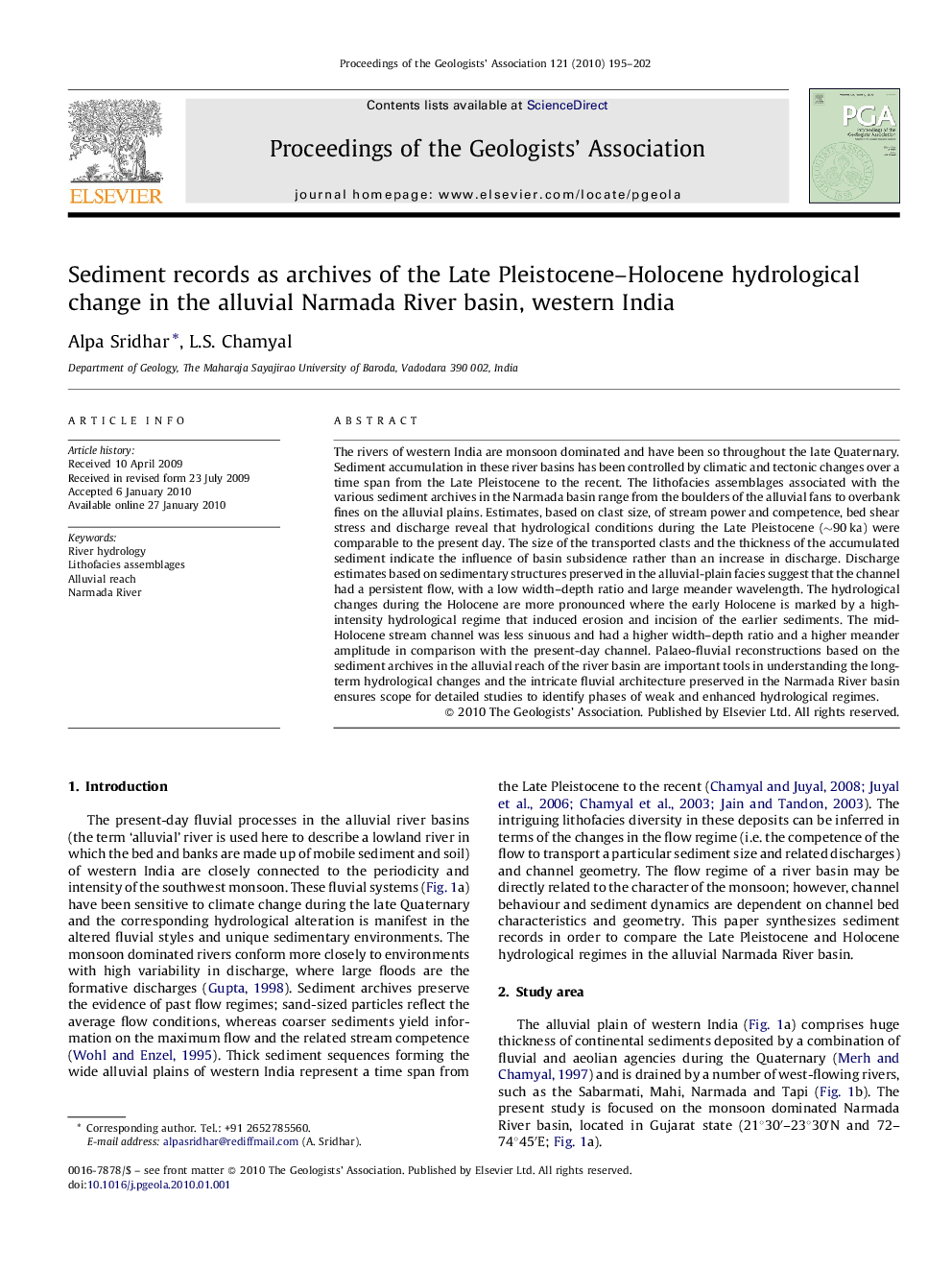| کد مقاله | کد نشریه | سال انتشار | مقاله انگلیسی | نسخه تمام متن |
|---|---|---|---|---|
| 4735183 | 1640673 | 2010 | 8 صفحه PDF | دانلود رایگان |
عنوان انگلیسی مقاله ISI
Sediment records as archives of the Late Pleistocene-Holocene hydrological change in the alluvial Narmada River basin, western India
دانلود مقاله + سفارش ترجمه
دانلود مقاله ISI انگلیسی
رایگان برای ایرانیان
کلمات کلیدی
موضوعات مرتبط
مهندسی و علوم پایه
علوم زمین و سیارات
زمین شناسی
پیش نمایش صفحه اول مقاله

چکیده انگلیسی
The rivers of western India are monsoon dominated and have been so throughout the late Quaternary. Sediment accumulation in these river basins has been controlled by climatic and tectonic changes over a time span from the Late Pleistocene to the recent. The lithofacies assemblages associated with the various sediment archives in the Narmada basin range from the boulders of the alluvial fans to overbank fines on the alluvial plains. Estimates, based on clast size, of stream power and competence, bed shear stress and discharge reveal that hydrological conditions during the Late Pleistocene (â¼90Â ka) were comparable to the present day. The size of the transported clasts and the thickness of the accumulated sediment indicate the influence of basin subsidence rather than an increase in discharge. Discharge estimates based on sedimentary structures preserved in the alluvial-plain facies suggest that the channel had a persistent flow, with a low width-depth ratio and large meander wavelength. The hydrological changes during the Holocene are more pronounced where the early Holocene is marked by a high-intensity hydrological regime that induced erosion and incision of the earlier sediments. The mid-Holocene stream channel was less sinuous and had a higher width-depth ratio and a higher meander amplitude in comparison with the present-day channel. Palaeo-fluvial reconstructions based on the sediment archives in the alluvial reach of the river basin are important tools in understanding the long-term hydrological changes and the intricate fluvial architecture preserved in the Narmada River basin ensures scope for detailed studies to identify phases of weak and enhanced hydrological regimes.
ناشر
Database: Elsevier - ScienceDirect (ساینس دایرکت)
Journal: Proceedings of the Geologists' Association - Volume 121, Issue 2, 2010, Pages 195-202
Journal: Proceedings of the Geologists' Association - Volume 121, Issue 2, 2010, Pages 195-202
نویسندگان
Alpa Sridhar, L.S. Chamyal,